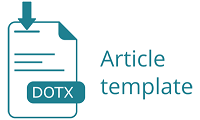Analyzing the Relationship Between Food Security, Food Taboos, and Stunting Incidence Among Toddlers Aged 24–59 Months
DOI:
https://doi.org/10.32807/jkp.v19i2.1859Abstract
Stunting is a chronic growth disorder characterized by a child's height that is inappropriate for their age. It is caused by prolonged nutritional deficiencies, particularly during the critical growth period of 0–24 months. An increase in stunting among children raises the risk of illness, mortality, weakened immunity, increased infections, and impaired physical and cognitive development. In the short term, stunted children are more susceptible to disease and death, and often experience delays in mental and motor development. Long-term effects include disproportionate growth according to age and an increased risk of obesity, especially among females who are future mothers. According to the 2022 Indonesian Nutritional Status Survey (SSGI), Central Lombok Regency recorded the % stunting prevalence among all regencies/cities in West Nusa Tenggara Province, at 37%.Furthermore, based on the Ministry of National Development Planning (Bappenas) Decree No. KEP.61/M.PPN/HK/08/2024, Central Lombok was designated as a Priority Location (lokus) for stunting prevention due to its high estimated number of stunted children and low coverage of nutritional interventions. This study employed an observational design with a cross-sectional approach. The study population comprised all toddlers in Central Lombok Regency, with a sample of 144 toddlers. Data were analyzed using multivariate tests with SPSS 24 software. Multivariate analysis showed no significant association between food security (p = 0.153; OR = 0.56; 95% CI: 0.252–1.242), sex (p = 0.124; OR = 0.54; 95% CI: 0.255–1.138), and the incidence of stunting among children aged 24–59 months in Central Lombok Regency. Household food security was not significantly associated with stunting among toddlers aged 24–59 months.
Downloads
Published
How to Cite
Issue
Section
Citation Check
License

This work is licensed under a Creative Commons Attribution-ShareAlike 4.0 International License.
Upon the acceptance of the article by the Editorial Board of Jurnal Kesehatan Prima and the decision to publish it, the copyright for the article will be transferred to Jurnal Kesehatan Prima, published by Poltekkes kemenkes Mataram. Poltekkes kemenkes Mataram as the publisher of Jurnal Kesehatan Prima holds the copyright to all published articles in this journal.



